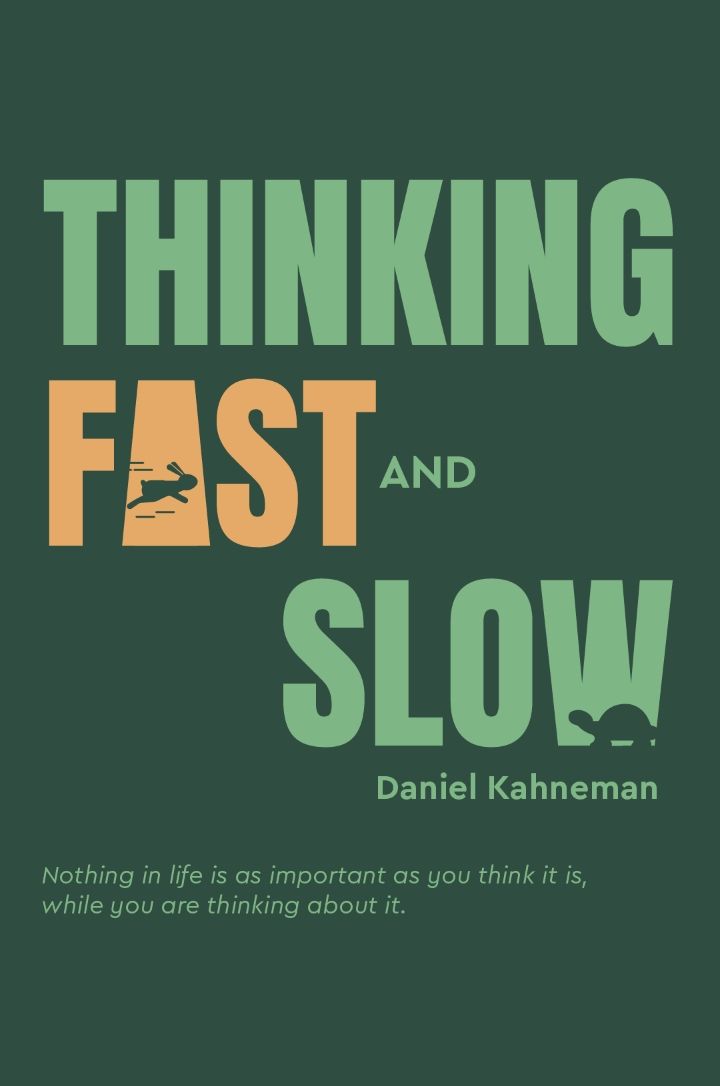Audio available in app
System 1 operates automatically and quickly from "summary" of Thinking, Fast and Slow by Daniel Kahneman
System 1 is the name we gave to the operations of the mind that are fast, automatic, effortless, associative, and often emotionally charged. This system is always at work, running constantly in the background of our minds, shaping our perceptions and guiding our decisions without us even being aware of it. It operates quickly, processing information in a fraction of a second and generating intuitive judgments and impulses almost instantaneously. One of the key characteristics of System 1 is its ability to work automatically, without requiring conscious effort or deliberate thought. It is like a well-oiled machine that is always ready to jump into action at a moment's notice. When we encounter a familiar situation or a common problem, System 1 kicks in automatically, providing us with instant responses and immediate solutions without us having to pause and think about it. The speed at which System 1 operates is truly remarkable. It allows us to navigate our complex and fast-paced world with relative ease, reacting to stimuli and making decisions in real time. This rapid processing speed is what enables us to quickly recognize patterns, make snap judgments, and respond to emergencies without hesitation. It is our brain's way of ensuring our survival and helping us adapt to our ever-changing environment. However, this automatic and rapid processing also comes with its downsides. Because System 1 operates so quickly and effortlessly, it is prone to biases, errors, and oversights. It relies on mental shortcuts and heuristics to make decisions, which can sometimes lead to irrationality and faulty reasoning. When we rely too heavily on System 1, we may overlook important information, misinterpret situations, and make poor choices without even realizing it. In understanding the workings of System 1, we can begin to appreciate the power and limitations of our intuitive mind. By being aware of how this system operates automatically and quickly, we can learn to harness its strengths and mitigate its weaknesses. It is a delicate balance that we must strike, using both System 1 and System 2 in tandem to navigate the complexities of our world and make sound judgments in our daily lives.Similar Posts
Framing effects can drastically alter our choices
Framing effects can drastically alter our choices. The way a decision is presented to us can significantly impact the decisions...
Training can help minimize the impact of biases
Training plays a crucial role in helping individuals recognize and overcome their cognitive biases. By providing individuals wi...
Emotions are the bridge between the mind and body
Emotions are the bridge between the mind and body. They are the language that "speaks" to every cell in our body. When we exper...
Urgency: creating a sense of time pressure
Urgency is a powerful psychological trigger that can be used to create a sense of time pressure in individuals. By leveraging u...

The brain prioritizes survival over accuracy
When faced with a potential threat, your brain goes into survival mode, activating a complex system that prepares you to fight ...
The brain can rewire itself in response to new experiences
One of the most remarkable features of the brain is its ability to adapt and change in response to new experiences. This phenom...
Framing effects can alter decision outcomes
Framing effects refer to the way in which choices are presented to individuals. The framing of a decision can significantly inf...
Balance is key in finding harmony in life
The ancient Chinese philosopher Zhuangzi tells a story about a butcher named Ding. Ding was so skilled at his craft that his kn...

